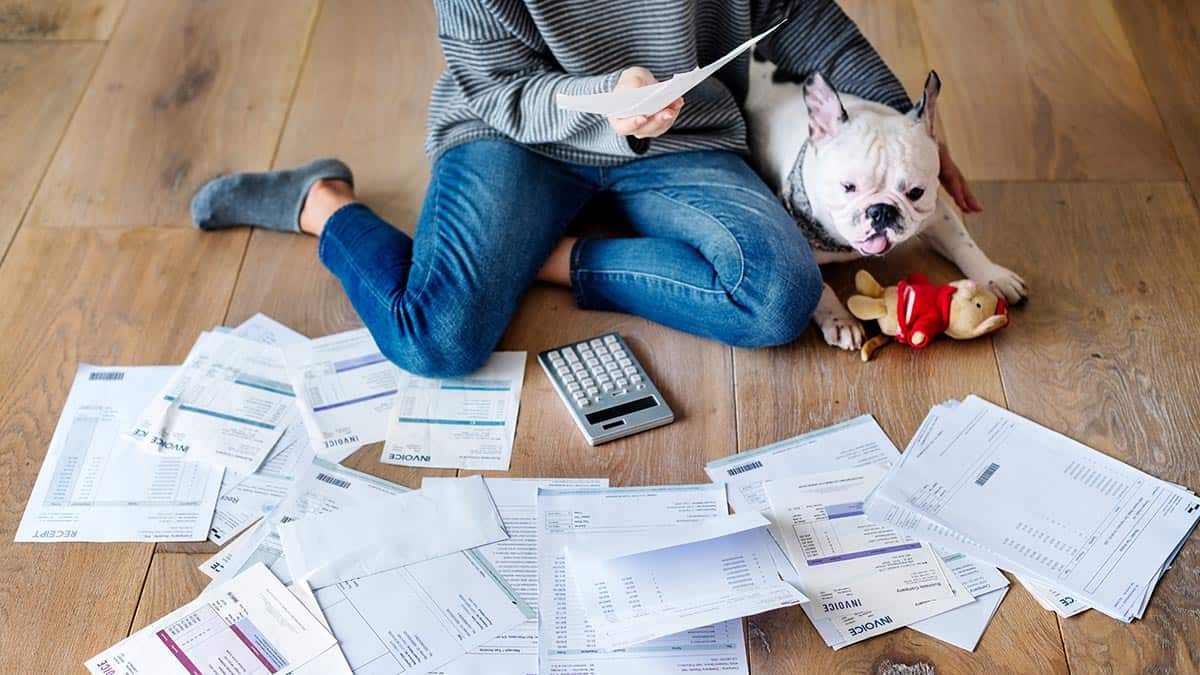To make Wealthtender free for readers, we earn money from advertisers, including financial professionals and firms that pay to be featured. This creates a conflict of interest when we favor their promotion over others. Read our editorial policy and terms of service to learn more. Wealthtender is not a client of these financial services providers.
➡️ Find a Local Advisor | 🎯 Find a Specialist Advisor

Why Right now is the Time to Tackle Your Debt
Key Takeaways
- Now is the time to take action as interest rates are expected to rise in the years
- Mortgage refinancing and debt consolidation options can lower your monthly bills
- The snowball or avalanche approach to paying off debts may be helpful
Over the past decade, we have had the gift and the curse of historically low-interest rates. This has allowed people to finance investments, businesses and home purchases much easier than they otherwise would have been able to do.
However, this has also made it easier for people to live outside their means and run up huge piles of debt. We are now entering a period of rising interest rates which means, the interest rates on loans, credit cards, and mortgages are going up.
If you have a fixed rate mortgage or loan, you won’t be impacted until your term is up, or you need to refinance the loan. If you have a variable rate loan, mortgage or credit card debt you have probably already felt the impact of increasing interest rates:
- Higher minimum payments
- higher interest costs
While there have been signals from the federal reserve that they may slow down future rate increases, interest rates are expected to keep moving up over the next few years.
Now is the time to banish your debt, once and for all.
Methods to pay off your Debt
To illustrate the pros and cons of the three methods to pay off your debt, let’s assume you have the following debt.
- Visa card: $5,000 balance, 19.9% interest rate
- Mastercard: $6,500 balance, 18.5% interest rate
- Personal loan: $4,500 balance, 12% interest rate
- Car loan: $20,000 balance 8.5% interest rate
Total debt: $36,000 at an average 12.3% interest.
How are you going to get that debt paid off? Here are three ways to get it done.
Method One: Mortgage Refinance/ Debt Consolidation
If you own your home and have enough equity, the simplest way to get a handle on this debt might be to refinance your mortgage.
To avoid fees, the highest Loan to Value (LTV) most traditional mortgage lenders are comfortable with is 80%. Meaning if your home was worth $200,000 the most you could refinance your mortgage to would be $160,000.
Let’s assume your house is worth $200,000 and you currently owe $120,000 on your mortgage. You might be able to refinance your mortgage, add an additional $36,000 to your mortgage and completely pay off your credit cards, personal loan and car loan in one shot.
You haven’t eliminated your debt; you’ve just traded in consumer debt for mortgage debt. Why might you do that? For two reasons:
- To lower the interest rate on your debt
- To free up more monthly cash flow
Let’s say you were able to refinance your mortgage at a rate of 5%. That is a much friendlier rate than the average of 12.3% interest you were paying before.
Increasing your mortgage by $36,000 would add $209 per month to your mortgage assuming you are on a 25-year amortization. If you had a separate payment for your car loan, both credit cards and the personal loan you would likely be spending a lot more than $209 per month simply to make the minimum payments.
Refinancing a mortgage could be an effective way to reduce your interest and free up significantly monthly cash flow. But beware you may only get one shot to refinance your mortgage.
If you fall back into debt, you might not have enough equity to do a second refinance. This is not a get out of debt free card, you must change your spending habits to ensure you don’t run those credit cards back up.
If you don’t have the home equity to do a refinance, you might consider a debt consolidation loan from your bank. The idea is like a mortgage refinance; pay off all the high-interest debt and put it onto one, lower monthly payment with a lower interest rate.
The rate you get on a loan like that will be dependent on multiple factors such as your credit score.
Method Two: The Snowball Method
The “snowball method” to debt repayment was made popular by Dave Ramsey. It is a four-step process.
Step 1: List your debts from smallest to largest.
Step 2: Make minimum payments on all your debts except the smallest.
Step 3: Pay as much as possible on your smallest debt.
Step 4: Repeat until each debt is paid in full.
Using our hypothetical debt here is how the snowball method would work.
Step 1:
- Personal loan: $4,500 balance, 12% interest rate
- Visa card: $5,000 balance, 19.9% interest rate
- Mastercard: $6,500 balance, 18.5% interest rate
- Car loan: $20,000 balance 8.5% interest rate
Step 2:
Make the minimum payment on the Visa, Mastercard and car loan
Step 3:
Focus all your financial resources to paying down the personal loan which has the smallest balance at $4,500.
Step 4:
Once the car loan is paid off, make the minimum payments on the Mastercard and car loan and focus all your financial resources on paying off the Visa (Which has the second smallest balance).
Rinse and repeat.
Why the Snowball Method Works
This method has gained popularity because getting out of debt is as much a psychosocial battle as it is a financial battle. Once you clear that first loan you can count that as a “Win”. It gives many people the confidence they need to keep going until all the debt is paid off.
Method Three: The Avalanche Method
The Avalanche Method is the exact opposite of the snowball approach. Rather than paying off the loans with the smallest balance first, you pay off the loans with the highest interest rate first. It is also a four-step process.
Step 1: List all your debts from the lowest interest rate to the highest interest rate.
Step 2: Make minimum payments on all your debts except the debt with the highest interest rate.
Step 3: Pay as much as possible on your debt with the highest interest rate.
Step 4: Repeat until each debt is paid in full.
Using our hypothetical debt this is how the Avalanche method would work.
Step 1:
- Visa card: $5,000 balance, 19.9% interest rate
- Mastercard: $6,500 balance, 18.5% interest rate
- Personal loan: $4,500 balance, 12% interest rate
- Car loan: $20,000 balance 8.5% interest rate
Step 2:
Make the minimum payments on the Mastercard, personal loan and car loan.
Step 3:
Focus all your financial resources on paying off the Visa card as quickly as possible.
Step 4:
Make the minimum payments on the personal loan and car loan and focus all your additional financial resources on paying off the Mastercard.
Repeat until you are debt free.
Why the Avalanche Method Works
Over the long run, the avalanche method will save you money compared to the snowball approach. By getting rid of the highest rate of interest first, you will pay less overall interest by the time you have cleared all your debts.
If you have the discipline to “stick with it”, knowing it might be a long time before you get your first “win”, this might be the route for you.
Bottom Line
There is no clear “best way” to attack your debt. The best way for you will be the strategy that you can stick with. By the numbers, the Avalanche approach is more “optimal” than the snowball method. But if you need those quick wins to keep you going, who cares about optimal? You just need to get this debt taken care of, starting right now.
No matter how you get rid of the debt, the most important thing is you develop the financial discipline to continue tracking where your money is going and make sure you keep the debt off for good.
Have you tried one of these methods or another approach to pay off your own debt? Tell us what worked best for you in the comments section below.

About the Author
Ben Le Fort
In the eight years following graduation, he paid off all of the debt and built a seven-figure net worth. Ben holds a Bachelor’s degree in economics from Acadia University and a Master’s degree in Economics & Finance from The University of Guelph.
Ben lives in Waterloo, Ontario, with his wife, son, and cat named Trixie.
To make Wealthtender free for readers, we earn money from advertisers, including financial professionals and firms that pay to be featured. This creates a conflict of interest when we favor their promotion over others. Read our editorial policy and terms of service to learn more. Wealthtender is not a client of these financial services providers.
➡️ Find a Local Advisor | 🎯 Find a Specialist Advisor

